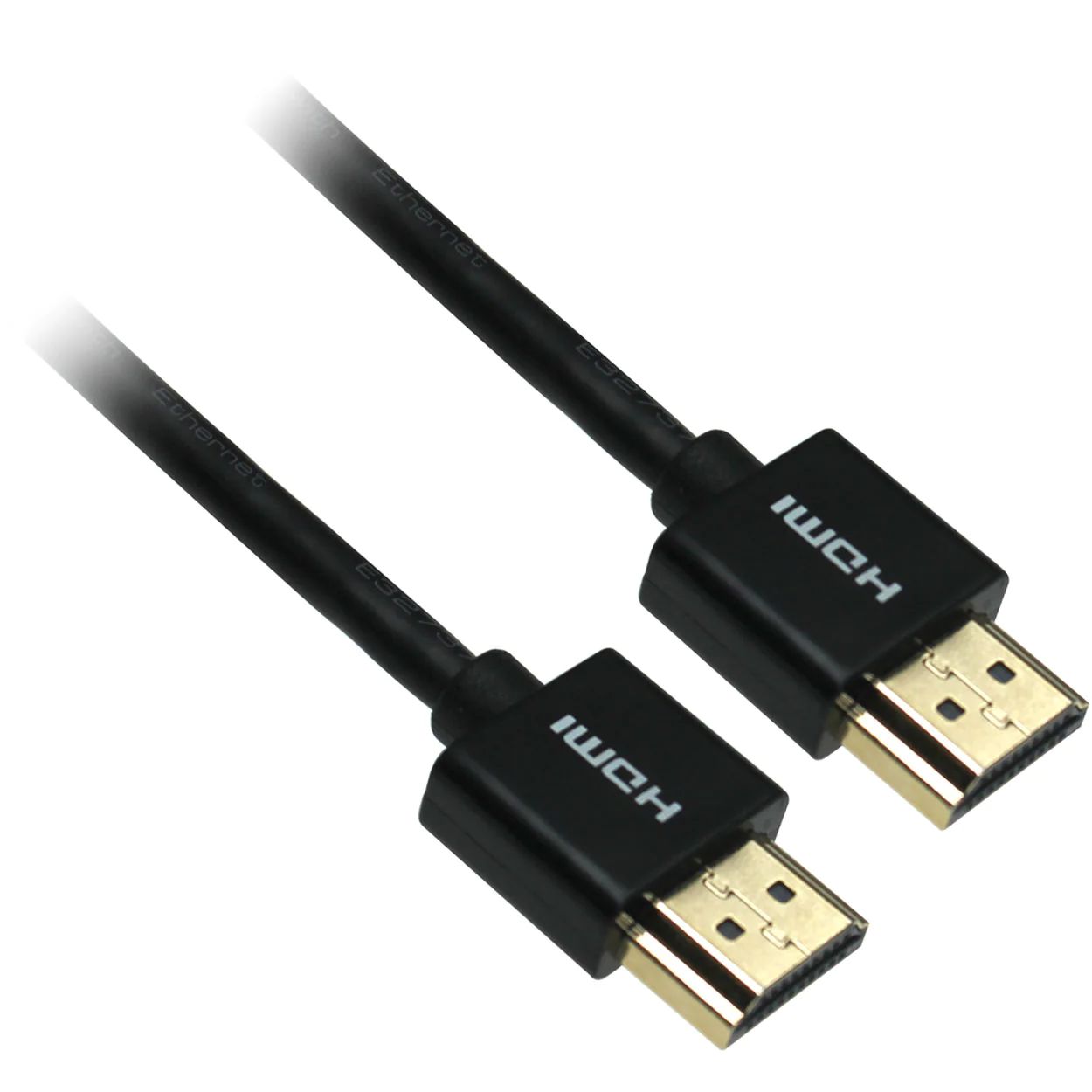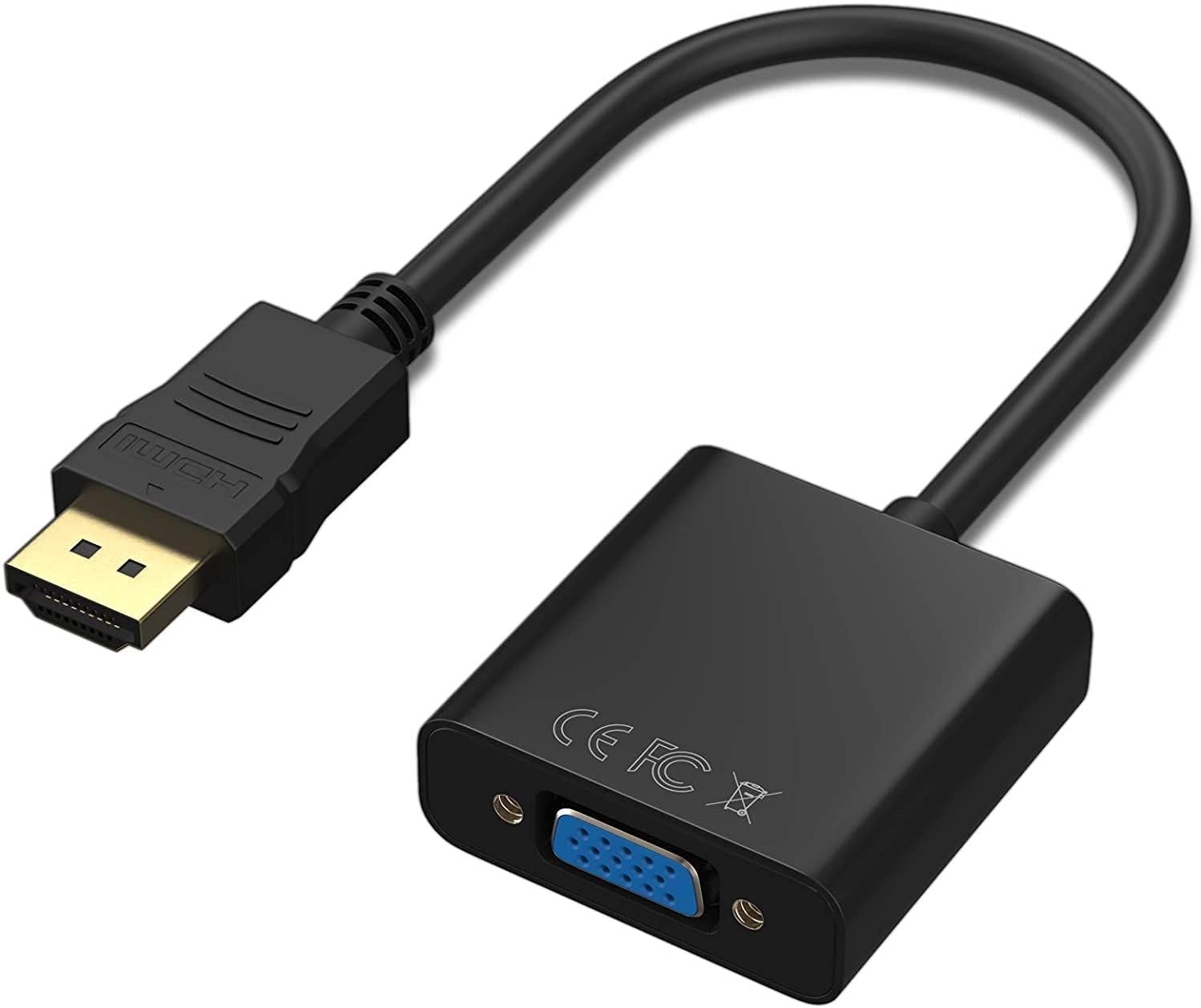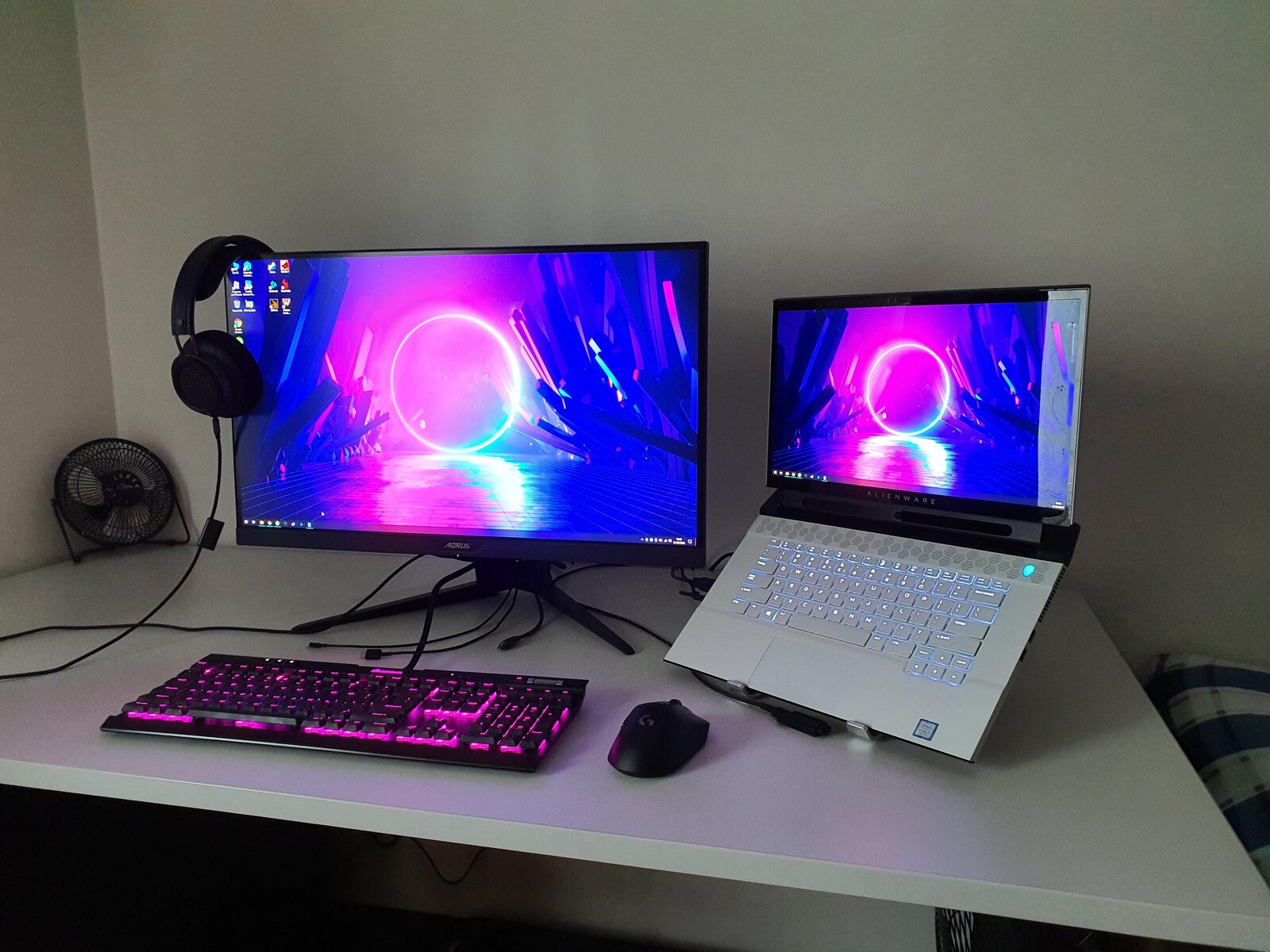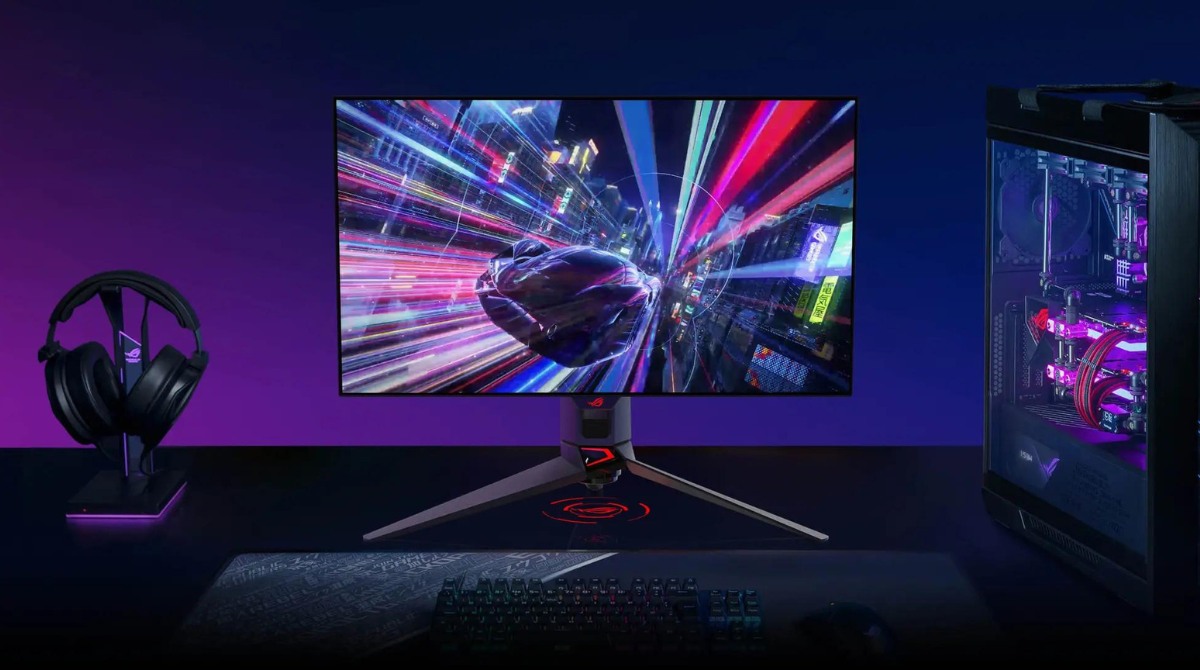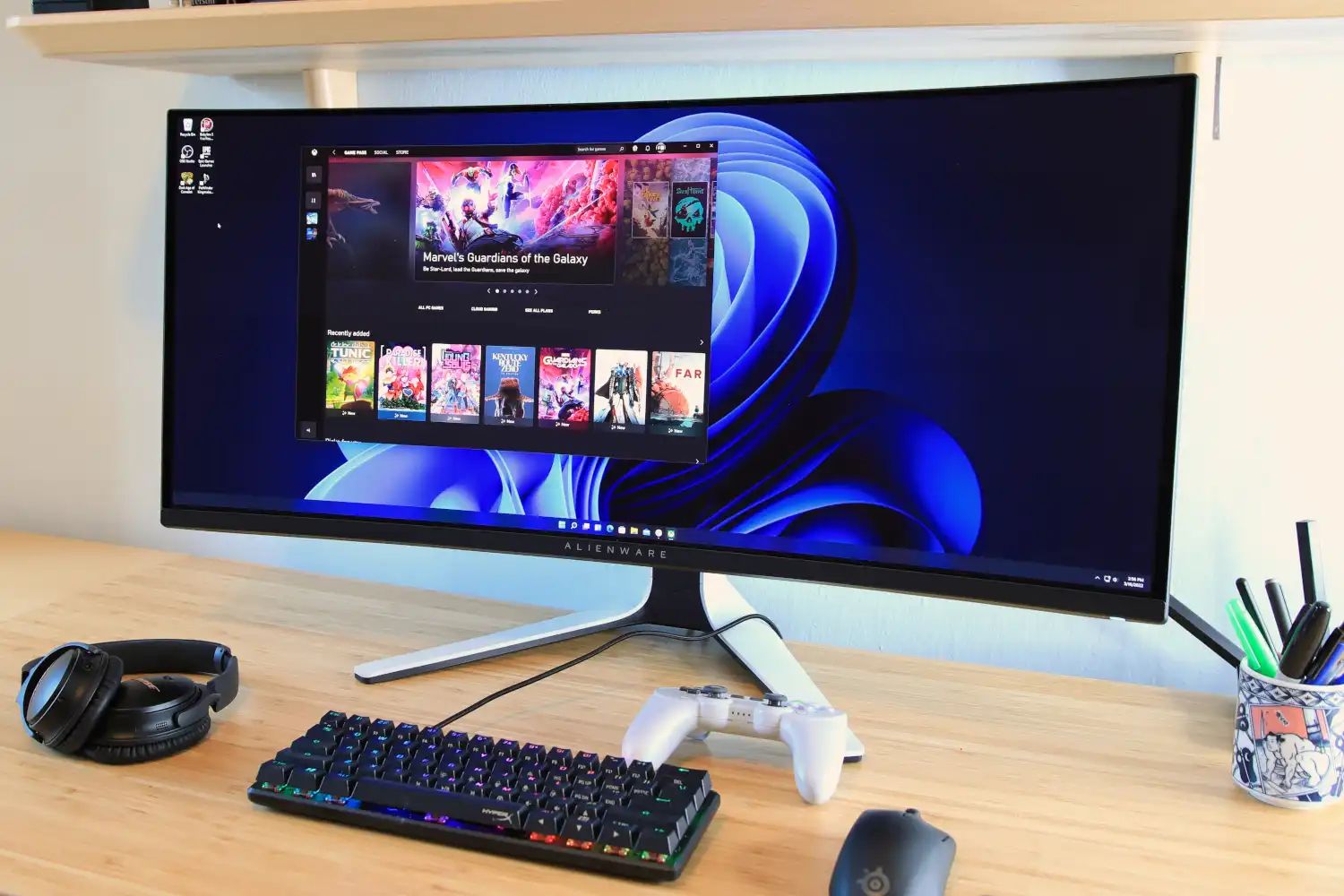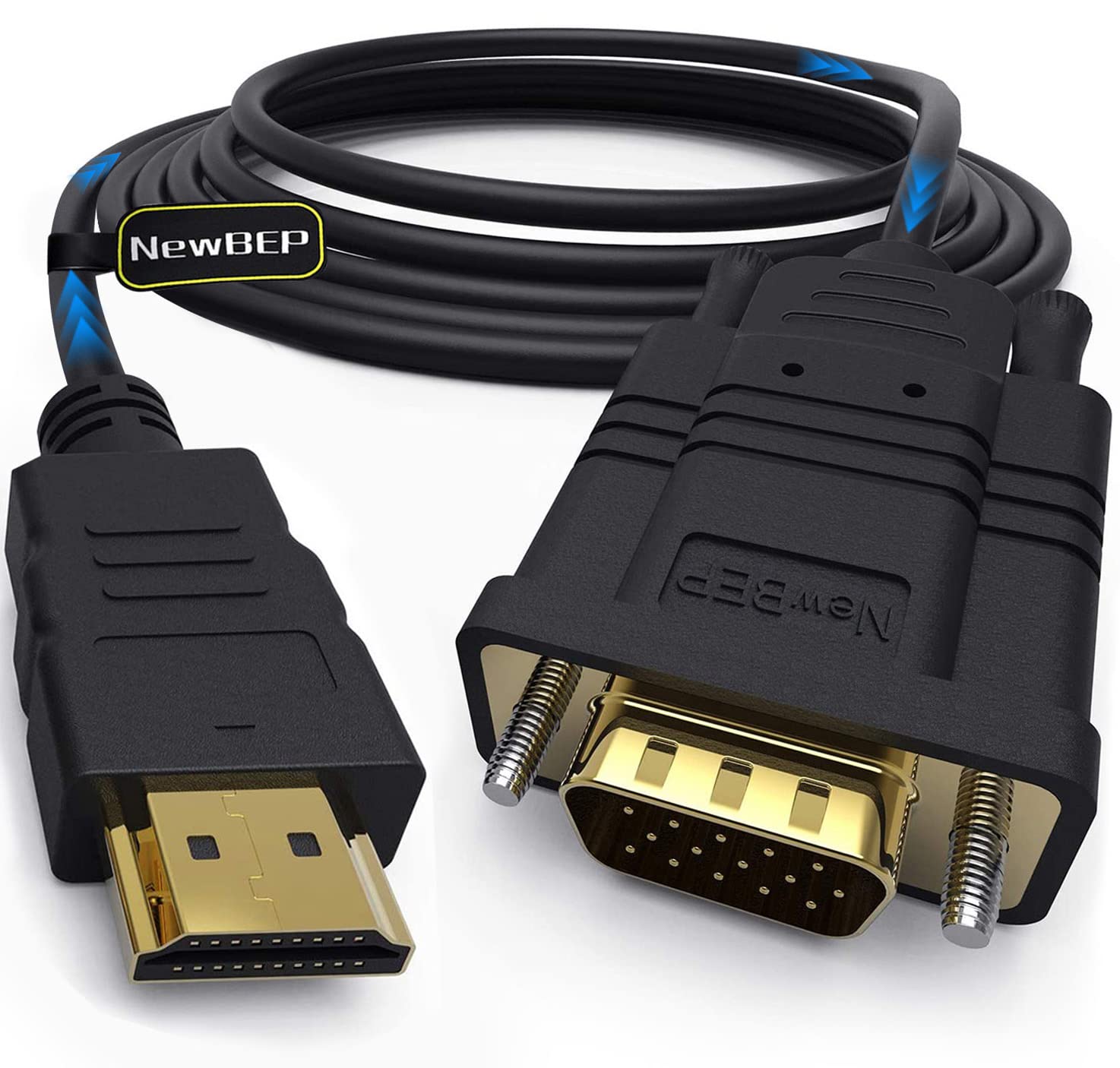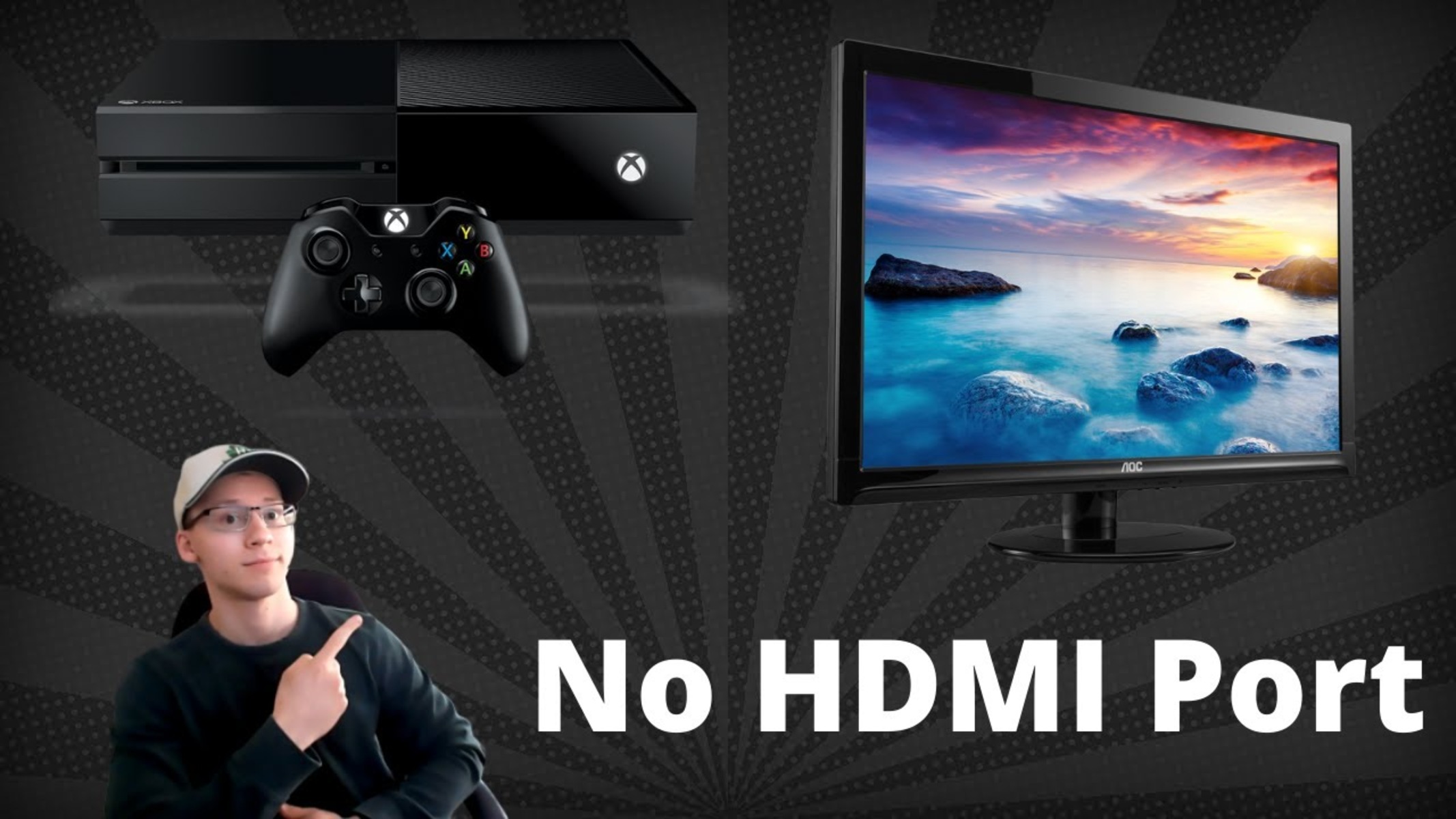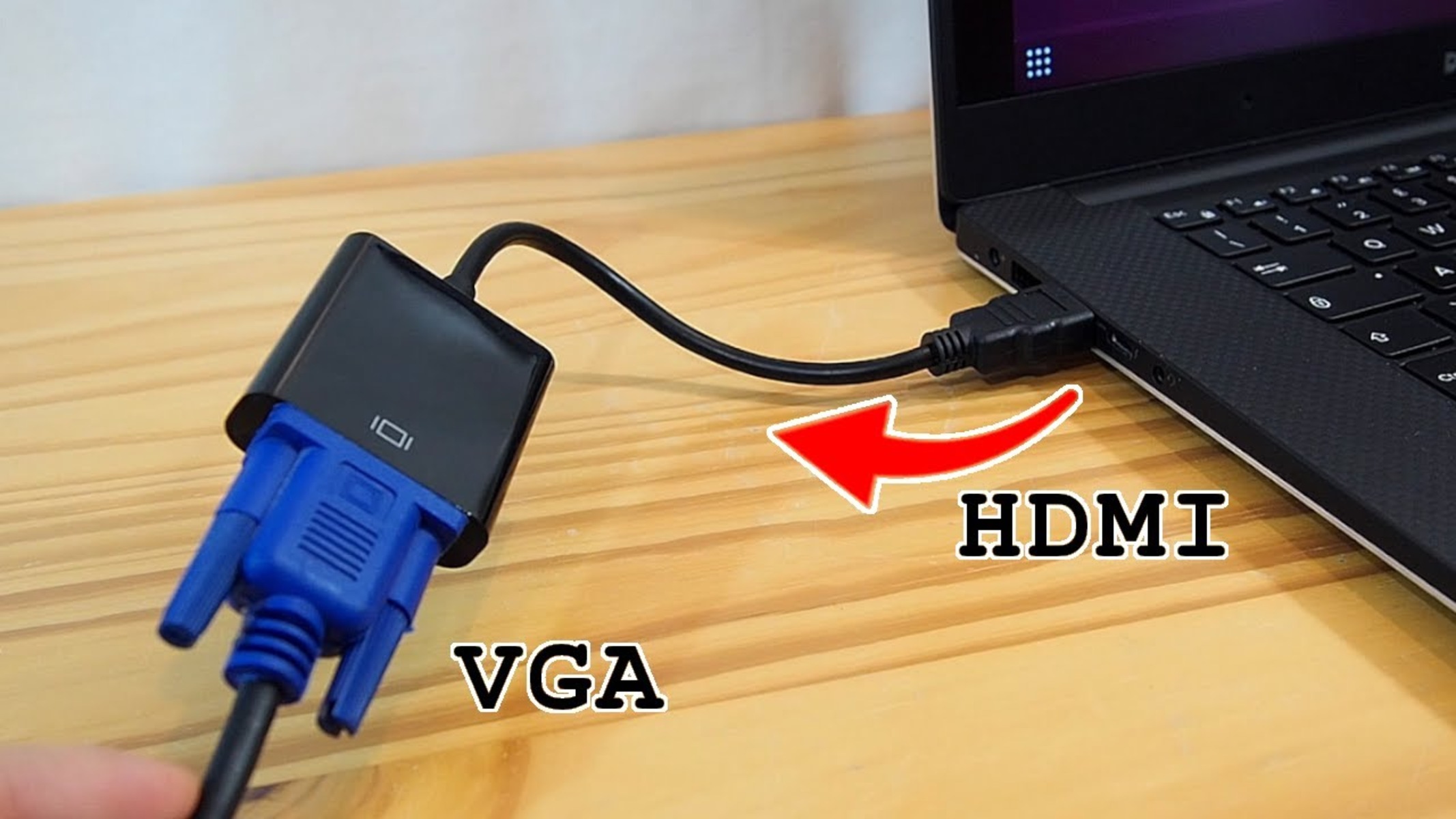Introduction
When it comes to connecting your devices to a display, two common options are HDMI and VGA. HDMI (High Definition Multimedia Interface) and VGA (Video Graphics Array) are both widely used for video output, but they have a few key differences that make them unique. Understanding these differences is essential to determine which option is better suited for your specific needs.
HDMI is a digital interface that carries both audio and video signals through a single cable. It was introduced in 2003 and has become the industry standard for connecting high-definition devices, such as TVs, monitors, and projectors, to various sources like DVD players, gaming consoles, and streaming devices.
VGA, on the other hand, is an older analog standard that has been around since the late 1980s. It was primarily used for connecting computers or laptops to monitors or projectors. VGA cables transmit video signals using analog technology, and they do not carry audio signals.
The main difference between HDMI and VGA lies in their capabilities and the quality of output they provide. HDMI offers superior image quality due to its digital nature, whereas VGA may exhibit some signal degradation and reduced sharpness due to its analog transmission. Additionally, HDMI supports audio transmission, while VGA requires a separate audio cable or alternative audio output method.
This article will delve deeper into the differences between HDMI and VGA, including image quality, audio capabilities, compatibility, resolution and display support, as well as plug and play functionality. By understanding these factors, you’ll be able to make an informed decision when it comes to selecting the appropriate connection type for your devices.
What Is HDMI?
HDMI, which stands for High Definition Multimedia Interface, is a digital interface used for transmitting both high-definition video and audio signals from a source device to a display device. It was first introduced in 2003 and has since become the de facto standard for connecting a wide range of electronic devices, including TVs, monitors, projectors, and audio-video receivers.
HDMI cables utilize a series of digital encoding methods to transmit uncompressed video and audio data, resulting in a high-quality and crystal-clear output. The use of digital transmission ensures a lossless transfer of data, eliminating any degradation or interference that can occur with analog signals.
One of the key features of HDMI is its ability to carry both video and audio signals through a single cable. This eliminates the need for multiple cables and simplifies the connection process. HDMI cables also support various audio formats, including Dolby TrueHD, DTS-HD Master Audio, and multichannel LPCM (Linear Pulse-Code Modulation), allowing for immersive and high-fidelity sound reproduction.
In addition to audio and video signals, HDMI cables also support several other data types, including Ethernet and Control Return Channel (ARC). The Ethernet feature allows for internet connectivity between HDMI devices, eliminating the need for separate network cables. The ARC feature allows the TV or audio-video receiver to send audio signals back to the HDMI source device, enabling a simplified audio setup and control.
HDMI has gone through several iterations over the years, with each release introducing new features and improvements. The most common HDMI connectors are the standard Type-A connectors, which are found on most TVs, monitors, and other display devices. However, there are also smaller connectors, such as the Type-C (Mini HDMI) and Type-D (Micro HDMI), that are commonly used with smaller devices like smartphones and tablets.
Overall, HDMI provides a seamless and high-quality digital connection between devices, allowing for exceptional audio and video performance. Its widespread adoption and compatibility with a multitude of devices make it the go-to choice for connecting modern entertainment systems and multimedia devices.
What Is VGA?
VGA, which stands for Video Graphics Array, is an analog standard that was introduced in the late 1980s as a way to connect computers and laptops to monitors and projectors. It was a widely used standard for video output before the advent of digital interfaces like HDMI and DisplayPort.
VGA cables use analog technology to transmit video signals, which means that the video data is converted into analog signals before being sent over the cable. This analog nature of VGA can sometimes result in signal degradation and reduced image quality, especially over longer cable lengths or when connecting to high-resolution displays.
Unlike HDMI, VGA cables do not carry audio signals. Therefore, if you intend to transmit audio alongside the video, you will need to use alternative methods such as separate audio cables or utilizing the audio output of the source device.
VGA connectors feature three rows of pins and a distinctive blue-colored connector. The most common connector type is the standard 15-pin VGA connector, also known as a D-sub connector. However, variations with fewer pins, such as 9-pin and 9-pin mini-DIN connectors, can also be found on some devices.
Despite being an older technology, VGA still finds its use in certain scenarios where digital options may not be available. Some legacy devices and older computers may still have VGA outputs, making it necessary to use VGA for connecting to older displays or projectors that do not have HDMI compatibility.
It is important to note that VGA’s resolution support is limited compared to HDMI. While HDMI can accommodate high-definition resolutions up to 4K and beyond, VGA is typically limited to lower resolutions, such as 1080p or even 720p. This means that you may not be able to achieve the same level of visual detail and clarity when using VGA compared to HDMI.
Overall, VGA serves as a dependable analog connection option for older devices and displays, but its lack of audio capability and lower resolution support make it less ideal for modern high-definition multimedia setups.
Difference Between HDMI and VGA
HDMI and VGA are two distinct video interfaces, each offering its own set of advantages and limitations. Understanding the differences between these two options is crucial for selecting the most appropriate connection method for your specific needs. Here are the key differences:
1. Image Quality: HDMI is a digital interface, which means that it provides a higher quality output compared to VGA’s analog transmission. HDMI allows for the transmission of uncompressed digital video signals, resulting in sharper images, vibrant colors, and greater overall visual clarity. On the other hand, VGA’s analog nature may introduce signal degradation, resulting in reduced image quality, especially at higher resolutions.
2. Audio Capability: HDMI cables support the transmission of both video and audio signals over a single cable, making it a convenient option for connecting audio-video devices. In contrast, VGA cables only transmit video signals, and if audio needs to be transmitted, it requires a separate audio cable or alternative audio output method.
3. Compatibility: HDMI has become the standard interface for most modern TVs, monitors, and other display devices. It is widely supported by a variety of devices, from gaming consoles to Blu-ray players, ensuring easy compatibility between different devices. VGA, while still used in some legacy systems, is gradually being phased out in favor of digital interfaces and may not be supported by newer devices.
4. Resolution and Display Support: HDMI supports a wide range of resolutions, including HD (720p, 1080p), Ultra HD (4K), and even higher resolutions for newer versions. It is capable of delivering high-resolution content without any loss in quality. On the other hand, VGA is limited in terms of resolution support, typically maxing out at 1080p or lower. This means that HDMI is better suited for modern high-resolution displays, offering a superior visual experience compared to VGA.
5. Plug and Play: HDMI offers a plug-and-play experience, where devices automatically detect and configure the appropriate settings, including display resolution and audio output. VGA may require manual configuration of display settings, such as resolution and refresh rate, depending on the device and operating system.
6. Cost: HDMI cables and devices are generally more expensive compared to VGA counterparts due to the advanced digital technology involved in their production. VGA cables, being analog and less complex, are typically more affordable. However, the price difference between HDMI and VGA cables has decreased over the years as HDMI has become more prevalent.
Overall, HDMI offers superior image quality, audio capability, and compatibility with modern devices, making it the preferred choice for high-definition multimedia setups. VGA, on the other hand, still serves a purpose for legacy systems or when connecting to older displays without HDMI compatibility.
Image Quality Comparison
When it comes to image quality, HDMI and VGA offer different levels of performance due to their inherent transmission methods.
HDMI: HDMI uses digital transmission, which allows for the transmission of uncompressed video signals. This means that the image quality remains intact throughout the entire transmission process. The digital nature of HDMI ensures that there is no loss of quality or degradation in the image, resulting in sharper details, vibrant colors, and a more visually stunning display. HDMI is capable of delivering high-definition resolutions such as 720p, 1080p, and even Ultra HD (4K), making it ideal for modern high-resolution displays.
VGA: In contrast, VGA utilizes analog transmission to carry video signals. This analog nature may result in some loss of quality, especially over longer cable lengths or when connecting to high-resolution displays. The analog signals are more susceptible to interference and degradation, which can lead to a reduction in image sharpness and color accuracy. While VGA can still provide decent image quality, especially at lower resolutions such as 720p or 1080p, it may not match the level of clarity and detail achieved with HDMI.
It is important to note that the difference in image quality between HDMI and VGA becomes more apparent when viewing high-definition content or when using larger displays. The digital transmission of HDMI ensures a consistent and high-quality image, while the analog transmission of VGA may introduce artifacts or signal noise that can impact picture quality.
Additionally, HDMI also supports advanced video technologies such as deep color and higher refresh rates, which further enhance the image quality and overall viewing experience. These features are not available with VGA, further highlighting the superiority of HDMI in delivering exceptional image fidelity.
In summary, HDMI provides superior image quality compared to VGA due to its digital transmission, ensuring a pristine and high-definition display. VGA, while still capable of delivering decent image quality, may experience some loss of quality and color accuracy due to its analog transmission. Therefore, if image quality is a top priority, HDMI is the recommended choice for achieving the best visual experience.
Audio Capability Comparison
Audio capability is an important factor to consider when choosing between HDMI and VGA, as it determines whether you can transmit audio signals alongside video.
HDMI: HDMI cables are designed to carry both video and audio signals, making it a convenient choice for connecting audio-video devices. With HDMI, you can enjoy a seamless audio experience without the need for extra cables or complex setups. HDMI supports various audio formats, including Dolby Digital, DTS, and PCM (Pulse Code Modulation), which allow for high-quality sound reproduction. This makes HDMI suitable for connecting devices such as Blu-ray players, gaming consoles, and home theater systems, where audio plays a vital role in the overall entertainment experience.
VGA: In contrast, VGA cables are purely designed for video transmission and do not have the capability to carry audio signals. If you want to transmit audio alongside the video when using VGA, you will need to use alternative methods. This could involve connecting a separate audio cable from the audio output of your source device (such as the headphone jack or audio ports) to the audio input of your display or using external speakers. It is important to verify that your display device has audio input capabilities if you plan on using VGA for audio transmission.
It is worth noting that modern audio-video devices increasingly rely on HDMI for audio transmission, with manufacturers gradually phasing out support for analog audio connections like VGA. This means that some newer devices may not have VGA inputs or may only support VGA for video transmission.
Overall, HDMI offers a significant advantage when it comes to audio capability, providing a streamlined and integrated audio-video solution. If audio transmission is essential to your setup, HDMI is the preferred choice, allowing for high-quality audio signals without the need for additional cables or complex configurations. On the other hand, VGA requires additional audio wiring or alternate audio output methods, making it a less optimal choice for audio-intensive applications.
Compatibility Comparison
When it comes to compatibility, HDMI and VGA differ in terms of their widespread adoption and support by various devices and display systems.
HDMI: HDMI has become the industry standard for connecting audio-video devices. It is widely supported by a vast range of devices, including TVs, computer monitors, projectors, gaming consoles, Blu-ray players, streaming devices, and home theater systems. HDMI compatibility is almost guaranteed in modern devices, making it easy to connect and integrate different components of your multimedia setup. HDMI is also backward compatible, meaning that newer versions of HDMI cables and devices can work with older HDMI versions, ensuring long-term compatibility.
VGA: While VGA was once the primary video interface for connecting computers and displays, its popularity has diminished in recent years. Many modern devices, such as newer models of TVs and laptops, no longer feature VGA ports. However, VGA may still be present in some legacy systems, older monitors, or projectors that do not have HDMI compatibility. In such cases, VGA can be a viable option to establish a video connection, although it may require additional adapters or converters to connect to devices with HDMI outputs.
It is important to note that some devices may offer HDMI-to-VGA or VGA-to-HDMI adapters, allowing for compatibility between the two interfaces. However, these adapters may not always guarantee optimal performance or support all features that each interface provides. Therefore, it is recommended to use the native interface that is supported by your device whenever possible.
In summary, HDMI has widespread compatibility and is supported by a wide range of devices, making it the more versatile choice for connecting audio-video components. VGA, on the other hand, is becoming less common in modern devices but may still be useful for compatibility with legacy systems or older displays that lack HDMI compatibility. When considering compatibility, it is advisable to assess the requirements of your specific devices and ensure that they support the desired interface for seamless connectivity.
Resolution and Display Support Comparison
Resolution and display support are crucial factors to consider when choosing between HDMI and VGA, as they determine the maximum resolution that can be achieved and the type of displays that can be connected.
HDMI: HDMI supports a wide range of resolutions, making it suitable for high-definition and ultra-high-definition displays. HDMI can support resolutions such as 720p, 1080p (Full HD), and even 4K (Ultra HD) and higher resolutions with newer versions. This means that HDMI can deliver a crisp and detailed picture on compatible displays, providing an immersive viewing experience. Additionally, HDMI also supports other video technologies, including deep color and high refresh rates, enabling smooth motion and enhanced visual quality.
VGA: VGA, being an older analog standard, has limitations in terms of resolution support. While it can handle resolutions such as 720p, 1080p (Full HD), or lower, it may struggle with higher resolutions commonly used in modern displays. VGA may not provide the same level of visual detail and clarity as HDMI, especially when connected to larger or high-resolution screens. It is important to note that using VGA with higher-resolution displays may result in a downscaling of the signal or reduced image quality.
It’s worth considering the resolution capabilities of your display device and the desired level of visual detail when choosing between HDMI and VGA. If you have a high-resolution display or plan to use resolutions beyond 1080p, HDMI is the recommended choice. HDMI’s digital transmission ensures optimal picture quality and compatibility with modern displays. VGA, on the other hand, will work best for lower-resolution displays or when compatibility with older devices is required.
Keep in mind that connecting devices with different resolutions using HDMI may involve some configuration adjustments, as some devices may default to lower resolutions when connected. However, HDMI’s advanced capabilities and compatibility with various resolutions make it the more versatile option for displaying content at different resolutions and aspect ratios.
In summary, HDMI offers broader resolution support, including high-definition and ultra-high-definition resolutions, making it the optimal choice for modern displays. VGA, while capable of delivering decent image quality, is more suitable for lower-resolution displays or when compatibility with legacy devices is required.
Plug and Play Comparison
When it comes to ease of use and convenience, both HDMI and VGA offer different plug and play experiences.
HDMI: HDMI provides a seamless plug and play experience, allowing for hassle-free connectivity between devices. HDMI cables are hot-swappable, which means you can connect or disconnect devices while they are powered on without any issues. When you connect HDMI devices, they will automatically detect each other and configure the appropriate settings for resolution, aspect ratio, and audio output. This automatic configuration eliminates the need for manual adjustments and simplifies the setup process. Additionally, HDMI also supports HDMI-CEC (Consumer Electronics Control), which enables control of multiple HDMI devices with a single remote control, further enhancing the plug and play experience.
VGA: VGA may require some manual configuration to achieve the desired display settings. Connections using VGA may involve adjusting settings such as resolution, refresh rate, and display properties manually on the source device or computer. While many devices have automatic detection of VGA displays, there may be instances where manual configuration is necessary, depending on the device and operating system. VGA connections typically require the source and display to be powered off before connecting or disconnecting cables to avoid potential damage or signal interference. While it is not as quick and easy as HDMI’s plug and play experience, VGA can still be set up relatively easily with a few adjustments.
It is important to note that some newer devices may prioritize HDMI and have limited support for VGA connections, which can further affect the plug and play experience. Adapters or converters may be required when connecting VGA displays to HDMI-only devices.
In summary, HDMI offers a more seamless and automatic plug and play experience. With HDMI, devices can detect each other and configure the appropriate settings automatically, reducing the need for manual adjustments. VGA, while still relatively easy to set up, may require more manual configuration of display settings. Overall, HDMI provides a more user-friendly and hassle-free plug and play experience for connecting devices.
Cost Comparison
Cost is an important consideration when deciding between HDMI and VGA, as it can impact budgetary constraints and affordability.
HDMI: HDMI cables and devices generally tend to be slightly more expensive compared to VGA counterparts. This is primarily due to the more advanced digital technology involved in HDMI’s production and its widespread use in modern devices. HDMI cables with additional features, such as Ethernet or higher bandwidth capabilities, may come at a higher price point. However, the price difference between HDMI and VGA cables has decreased over the years as HDMI has become more prevalent and manufacturing costs have decreased. It is worth noting that when purchasing HDMI cables, it is important to select ones from reputable brands to ensure quality and reliability.
VGA: VGA cables, being analog and less complex, are generally more affordable compared to HDMI cables. They have been widely used for several decades and are still widely available at lower price points. VGA cables are simple in design and do not require advanced manufacturing processes or integrated circuitry, which contributes to their lower cost. However, as newer devices continue to rely on digital connections like HDMI, the availability and demand for VGA cables may decrease in the future.
It is important to consider the cost implications when choosing between HDMI and VGA. While the price difference may not be significant, it is essential to evaluate your specific needs, devices, and budget. If your devices support HDMI and you require the advanced features it offers, the slightly higher cost may be justified. However, if you have older or legacy devices that only support VGA, or if cost is a significant factor, opting for VGA can be a more affordable solution.
Lastly, it is advisable to consider future-proofing your setup. HDMI is the more future-proof option as it is the industry standard and continues to evolve with new features and higher bandwidth capabilities. Investing in HDMI-compatible devices and cables ensures compatibility with future devices and advancements in audio-video technology.
In summary, HDMI cables and devices generally have a slightly higher cost compared to VGA, but the price difference has diminished over time. Considering your specific requirements, device compatibility, and budget will help you determine which option provides the best value for your needs.
Conclusion
When it comes to choosing between HDMI and VGA, it is essential to consider the specific requirements of your audio-video setup, the image quality expectations, and the compatibility with your devices. Both HDMI and VGA have their own strengths and weaknesses, and understanding these differences will help you make an informed decision.
HDMI stands out as the superior option in terms of image quality, audio capability, compatibility with modern devices, high-resolution and display support, as well as offering a seamless plug and play experience. Its digital transmission ensures a lossless transfer of data, resulting in vibrant and sharp images and enabling the transmission of high-quality audio signals alongside video.
On the other hand, VGA is an analog standard that is gradually being phased out in favor of digital interfaces like HDMI. It may still have its uses in certain legacy systems or when connecting to older displays without HDMI compatibility. VGA provides a more affordable option, but it comes with limitations such as lower image quality, lack of audio transmission, and limited resolution support.
In conclusion, HDMI is the recommended choice for modern audio-video setups, which require high image quality, audio capability, versatility, and compatibility with a wide range of devices. However, if you have specific requirements for legacy systems or older displays without HDMI compatibility, VGA can still serve a purpose.
Ultimately, the decision between HDMI and VGA will depend on your specific needs, budget constraints, and device compatibility. By evaluating the image quality, audio capability, compatibility, resolution and display support, plug and play experience, and cost factors, you can determine which option is the most suitable for your audio-video setup.









